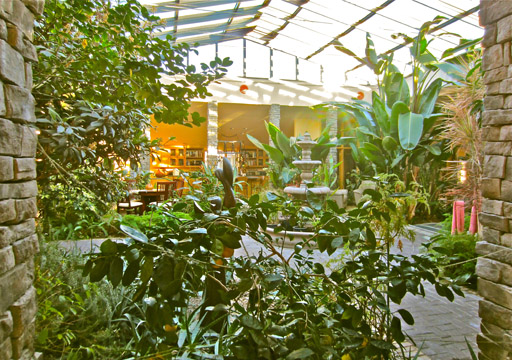
Click MENU Icon to Close

Click MENU Icon to Close
Embedded content at the bottom of this page includes regularly updated collections of insightful news.
Place Making, Habitat Preservation & Sustainable Design on the Lynnhaven River
With Accreditation & Acclaim, the Chesapeake Bay Foundation Establishes a High Profile Presence in Tidewater Posted 18 April 2016 by Carol Brighton While headquartered in Annapolis, Maryland, the Chesapeake Bay Foundation has supported education and advocacy activities near the mouth of its namesake for over 30 years. When development plans for a contentiously disputed 100+ acre track of coveted coastal property along the Lynnhaven River went belly up during the the real estate bubble, the organization got involved with the City of Virginia Beach and other groups to preserve the property. Developed on a 10 acre parcel of the larger Pleasure House Point property is the non-profit's second pioneering state of the art structure. The Brock Environmental Center not only welcomes visitors to the unique site, it also inspires a nature oriented or biophilic lifestyle. Along with a stimulating backdrop for environmental education and stewardship, the center literally epitomizes and demonstrates low impact technology and efficient use of natural resources. Director of the Hampton Roads office, Christy Everett reports that "because of innovative sustainable design, Engineering News-Record named the Brock Center as the recipient of the 2015 Best of the Best Green Project." With an active geothermal system and designed to take advantage of passive lighting, heating and cooling, the Brock Center demand for electricity is considerably less than that found in conventional construction. The project materials are free of toxic compounds and many were reclaimed from other sites. Wood trim and flooring recovered from athletic courts and bleachers of local school gymnasiums slated for demolition are featured throughout the complex interior. A rainwater harvesting system collects and treats water to refreshingly flavorful and state mandated potable standards while no plumbing waste is discharged into the sewage system. A wetland based grey water system filters effluent on site and toilet compost is repurposed as a soil amendment now available at garden centers. To power the lights and electrical demand, rooftop solar and bay breezes captured by 2 on site wind turbines generate far more energy than is consumed by staff and visitors. To get an idea of energy production and consumption at the facility at any given time, view the building energy dashboard here.
Built to achieve what those in the know consider to be the pinnacle of green building standards, architects, engineers and more labored to develop an environmentally healthy structure fully equipped for self-reliance. The building was awarded LEED Platinum status and Everett notes that "CBF is also seeking Living Building Challenge certification from the International Living Future Institute. To earn LBC credentials, the Brock Center must meet strict criteria during twelve continuous months." As operational monitoring was initiated in April 2015, an official announcement on the building's performance should be forthcoming. Jim Pierobon reports in Energy Fix that the building has undergone the prerequisite audit and that accreditation is expected to be awarded in May at the ILFI meeting in Seattle. If so, the building will officially then join an elite group of only 8 other "Living" certified structures. In addition to going above and beyond in the office design, CBF is involved in enhancing the ecology of the entire parcel. Invasive plants are being removed and efforts are ongoing to nurture native vegetation and wildlife on land that was originally created from the sandy dredge spoils clogging adjacent waterways. Wetland and oyster restoration efforts are also underway along the property shoreline. A birder's paradise, frequented by a multitude of resident and migratory species, the Audubon hosts regularly scheduled walks around the preserve. Place making and creating public space while also supporting essential habitat and ecosystem services, the Chesapeake Bay Foundation has firmly anchored a commanding presence in the community. The group shares its offices with a local nonprofit, Lynnhaven River Now. They are also taking on local leadership and along with clean water, they are tackling an issue particularly relevant to the region: climate resilience. In January, CBF named Harry Lester of Virginia Beach as Chairman of the Board. "There are many challenges facing the Chesapeake Bay," Mr. Lester said. "Chief among them is implementation of the Chesapeake Clean Water Blueprint, restoring clean water to the 17 million people living in the Bay's watershed. In addition there is the large task of mitigating the effects of climate change on the Bay and its living resources." In February CBF partnered with other non-profits for a professional workshop held in Norfolk on the implementation of natural infrastructure strategies to mitigate flood hazards.
Related Posts: The Climate Cure: Balancing Earth's Carbon Equilibrium by Transforming a Liability into a Commodity | Nature at Work: Building Ecological Infrastructure | Power Shift: The Clean Energy Revolution | Virginia Participates in Pioneering Planning Partnerships - Resilient & Biophilic Cities | Meadows Emerge as Growing Landscape Trend: Pollinators in Peril to Benefit | Adapting the Built Environment for Sea Level Rise | Extreme Green Design Edging Into the Mainstream |
|||
Virginia Visionary Displays Innovative Architecture at the World Economic Forum As global leaders and financial titans met early 2016 in Davos, Switzerland for the World Economic Forum, they were exposed to a new kind of structure designed by Virginia architect William McDonough and partners. The gathering place for Forum participants dubbed ICEhouse™ was sited in a prominent location on the main promenade of Davos to showcase Cradle to Cradle innovation. |
|||
Virginia Earns $120+ Million for Resilience Planning from HUD The Commonwealth is one of 13 recipients out of a pool of 67 applicants to receive funds made available through HUD's National Disaster Resilience Competition. The 16 month long project challenged states and municipalities to submit plans detailing climate adaptation and mitigation strategies. Last month, a delegation including Virginia Governor Terry McAuliffe travelled to Norfolk to announce the $120.5 million award. The Commonwealth's submission garnered the third largest award which will support the development of innovative stormwater infrastructure in Norfolk's Ohio Creek watershed. In addition, a Coastal Resilience Laboratory and Accelerator Center, also expected to be located in Norfolk, will be established. All told, HUD committed to over a billion dollars for state and community programs with the top awards going to New Orleans and New York. Image: January 21, 2016 NDRC Announcement in Norfolk attended by Rockefeller Foundation COO Peter Madonia, HUD Secretary Julian Castro, Mayor Paul Fraim, Governor Terry McAuliffe & Representative Bobby Scott - by Charles White More Info: Read the Governor's Press Release & check out the Tidewater Rising Resiliency Design Challenge. |
|||

Want a room with a view? Check out this "Out of the Box" Sustainable Home for Sale in Poquoson. The community hosts passive and active solar, geothermal systems, indoor gardens, rainwater collection, an organic garden and orchard. Read about the Garden Atrium eco community in this post from 2011. For sale information and photo tour, go the the Garden Atrium site. |
|||
Building Carbon StoresThe building industry alone is responsible for almost half of CO2 emissions. By creating structures with carbon neutral or negative materials and designing for energy neutral or positive operation, it may be possible to build our way out of the carbon conundrum. The Virginia Beach home pictured is constructed from carbon sequestering hempcrete. Not only does hemp photosynthesize and remove carbon as it grows, hempcrete continues to remove carbon from the atmosphere during its structural life. Read more about carbon neutral materials. |
|||
Nature at WorkRe-establishing natural habitat in urban environments enhances biodiversity and increases resilience. Read about the innovative ways ecological infrastructure is being incorporated into the built environment like this new seawall in Seattle that will restore critical salmon habitat. Living shorelines, floating wetlands, phytoremediation, green roofs as well as office and rooftop urban agriculture are all discussed. Go to article. |
|||
Virginia Participates in Pioneering Planning Partnerships (Biophilic and Resilient Cities) Ground-breaking planning programs with Virginia ties have been launched. Two have an urban emphasis covering a host of cities spanning the globe, while another's focus is close to home and covers new territory: the ocean. The common thread behind all the initiatives is that through collaboration, creative approaches can be developed and shared so mutual goals can be achieved more efficiently. |
|||
Adapting to Rising Seas with Aquatecture Rather than retreating from inundation prone low elevations, the solution, in some situations, may be to look for ways to make accommodations to the built environment. Amphibious or floating architecture coined as aquatecture is one potential coping strategy. |
|||
Extreme Green Design Edging into the MainstreamThe Pacific Northwest is not the only green building corridor in the Nation. Within the Mid Atlantic and particularly the Chesapeake Bay region, the green construction movement is exploding. Pictured is a LEED Platinum Virginia Beach home featuring a vegetated roof, solar power with battery backup, rainwater harvesting and treatment system for potable uses. Read more about this home designed by Watershed Architects and more emerging developments here. |
|||
The meadow movement is gaining ground and putting down roots. From urban rooftops to suburban front yards and rural farmscapes, meadows are beginning to transform the managed environment. Although the movement has momentum, in many communities, progress is still in an infancy stage. Since these sustainable and beautiful landscapes provide important ecological services including wildlife habitat, the benefits extend well beyond aesthetic goals. Read more. |
|||
Virginia Solar Vintner Tour Vintners, who rely on sunshine to bring fruit to the vine, are also exploiting its power to energize their indoor operations. Explore the vineyards that are embracing solar power here. |
Check the Archive for Previous Posts
All Rights Reserved: Disclaimer